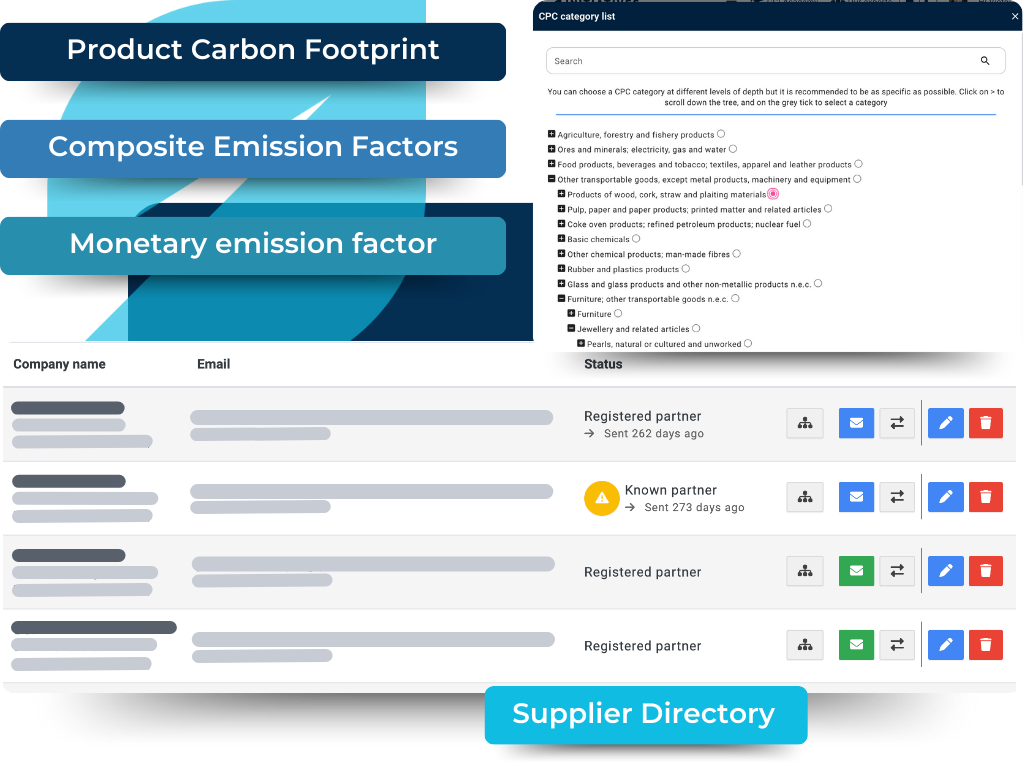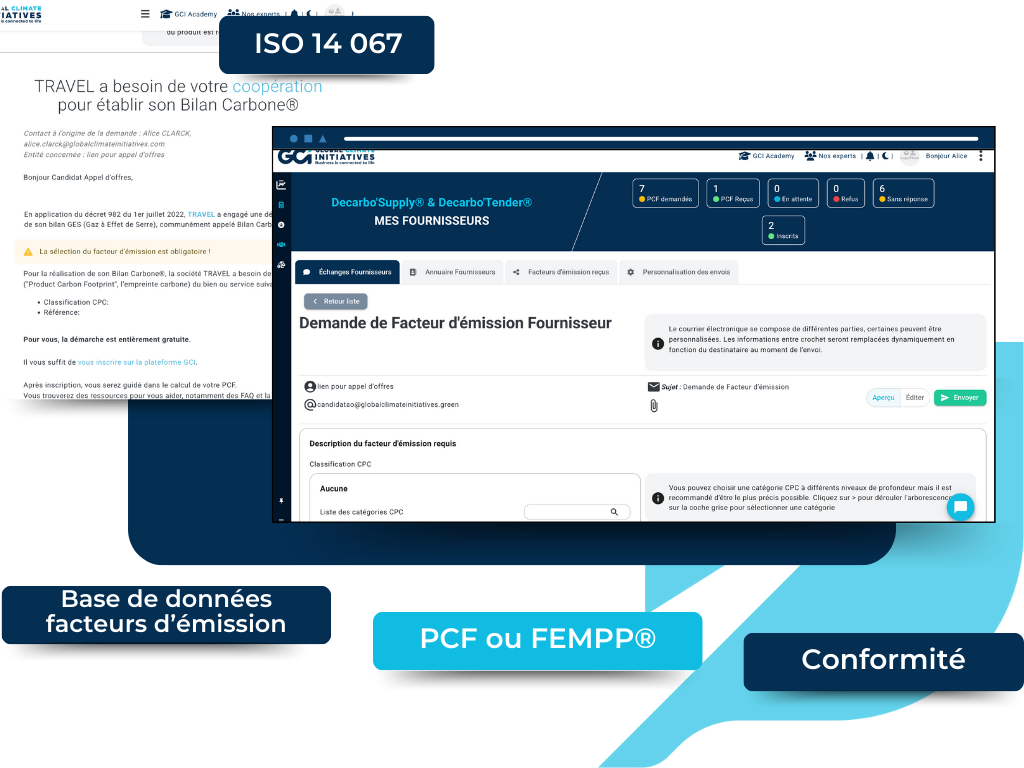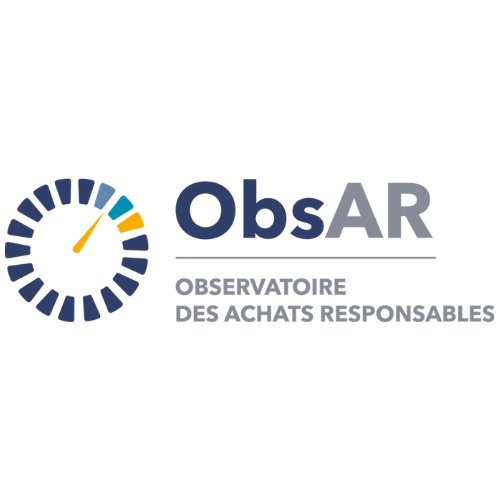Simulate the carbon footprint of your worksites
- Accurately measure the carbon footprint of your worksites or your business (worksites, workshops, offices...).
- Use our collaborative platform to involve your suppliers and employees in your decarbonization strategy.
- Get an accurate, complete carbon footprint that can be used against third parties
- Draw up your transition plan
Book a free strategy call and start your carbon transition today!
Companies are already committed to working with us to achieve the global goal of carbon neutrality.

Carry out a complete GHG assessment in compliance with current standards and regulations

Get support from our GCI carbon experts

Define your reduction actions, plan your low-carbon strategy

Engage your suppliers free of charge to optimize the calculation of your Scope 3 emissions

An approved and compliant GHG inventory
Protocols included:





Your GHG assessment, without stress and with impact
You don't need to be an expert to get started.
- A straightforward path adapted to your business, however complex it may be.
- Scopes 1, 2 and 3? Taken care of automatically, no headaches.
- Reliable data from the best databases: Base Carbone®, EcoInvent, Inies, BEIS... or directly transmitted by your suppliers.
- A balance sheet 100% compliant with the most demanding standards: ISO 14064, ISO 14067, GHG Protocol.

A structured, managed and visualized transition plan
Whether or not you have already carried out your GHG assessment with us
- Design and management of comprehensive action plans (ADEME Act method).
- Quantifying and projecting GHG impact using simulation tools.
- Definition of low-carbon trajectory with commitment from partners.
- Comparison of actual trajectory with reduction targets (SBTi).

Involve your suppliers in your climate approach
A simple, free platform for decarbonizing together.
- Automatically integrate your suppliers' carbon data into your scope 3.
- Track and visualize the low-carbon trajectory of your purchases in real time.
- Ensure regulatory compliance (CSRD, SBTi and CBAM) based on reliable, auditable supplier data.
- Give your suppliers access to the GHG and LCA assessments of their products and services.

Demand climate performance right from the tender stage
A simple, free platform for decarbonizing together.
- Precise request for PCF or FEMPP® in calls for tender.
- Link to the GCI platform for a calculation by requested good or service (with descriptive note).
- Compliance with the public procurement code: free of charge and focused on an environmental characteristic.
- Compliance with ISO 14 067 standard.

They are committed
and share their experience
The FFBad entrusts GCI with the carbon assessment of its activities, and continues with the GHG assessment of 20 affiliated clubs.
The Schmidt Group was able to enrol 80% of its suppliers (in terms of financial volume), and save 242 tonnes of CO2.
Natural Grass was assisted by GCI's carbon experts in carrying out its first GHG emissions assessment.
We answer your questions!
How do I calculate my company's GHG footprint?
First of all, carrying out a greenhouse gas assessment (BEGES) enables a company to precisely evaluate its carbon footprint and understand the main source of each of its greenhouse gas emissions.
The main difference between the Bilan Carbone and the Bilan GES lies in the definition of the emissions accounting perimeter.
In the Ademe methodology, the GHG balance calculation takes into account the entire life cycle of a company's products or services. This makes it possible to assess the company's overall GHG emissions and identify any sources of savings.
Greenhouse gas (GHG) emissions are assessed on the basis of consumption, using conversion factors specific to each energy source. This makes it possible to standardize measurements and obtain a quantity of emissions expressed in carbon dioxide equivalent (CO2e).
In other words, it involves multiplying your activity data (in kWh, units, liters, €) by an emission factor (average quantity of greenhouse gas emissions for 1 unit of your activity data).
Why carry out my GHG assessment?
Over and above regulatory obligations (in particular since decree no. 2022-982), carrying out a GHG assessment is an essential step for a company, as it enables it to identify and list the greenhouse gas emissions directly or indirectly linked to its activity.
Carrying out your company's first GHG assessment will enable you to make an initial measurement and identify the main emission sources. This will make it all the easier to identify potential areas for reduction and define a low-carbon strategy for your company.
Performing a GHG assessment regularly over time will provide an opportunity to adjust your action plan and ensure that you're achieving your goals for reducing your company's environmental impact.
What data do I need to provide?
To accurately measure greenhouse gas emissions, you need to identify all your company's emission sources. It is therefore necessary to collect activity data:
- Energy consumption (gas, oil, diesel, petrol, electricity, etc. .....)
- Depreciating assets (real estate, fleet of vehicles, computer equipment, furniture, etc.)
- Purchases of goods (raw materials, materials, food, etc.)
- Purchases of services (internet contract, maintenance and installation of equipment, supplies of services, fees, etc....)
- Movement of people: employee commuting, business travel, visitors and customers, etc. .....
- Haulage
- Disposal
- Use and end of life of products sold.
Although it is recommended to be as exhaustive as possible in identifying emission headings, it is possible to start with financial data and to refine the accuracy of the data over time. We recommend that you carry out your inventory in stages, starting with your largest expenditure items first.
How can I reduce my company's carbon footprint?
Reducing the carbon footprint of your company is a multi-step process:
- Carry out an initial assessment of your carbon footprint.
- Identify the most important emission headings, and find ways to reduce them by improving the accuracy of the data used for measurement.
- Involve your suppliers by asking them to calculate the carbon footprint of the goods and services they supply. The measurement will be all the more accurate and you will then be able to implement a responsible purchasing strategy.
- Set up an action plan and a measurement strategy over time to ensure that it is implemented and effective.
We are a member of :

Association pour la transition bas carbone

Association des Professionnels en Conseil Climat

Conseil National des Achats

Observatoire des Achats Responsables
Request a demo
Ask for a demonstration of the GCI platform,
our experts are at your disposal.






















